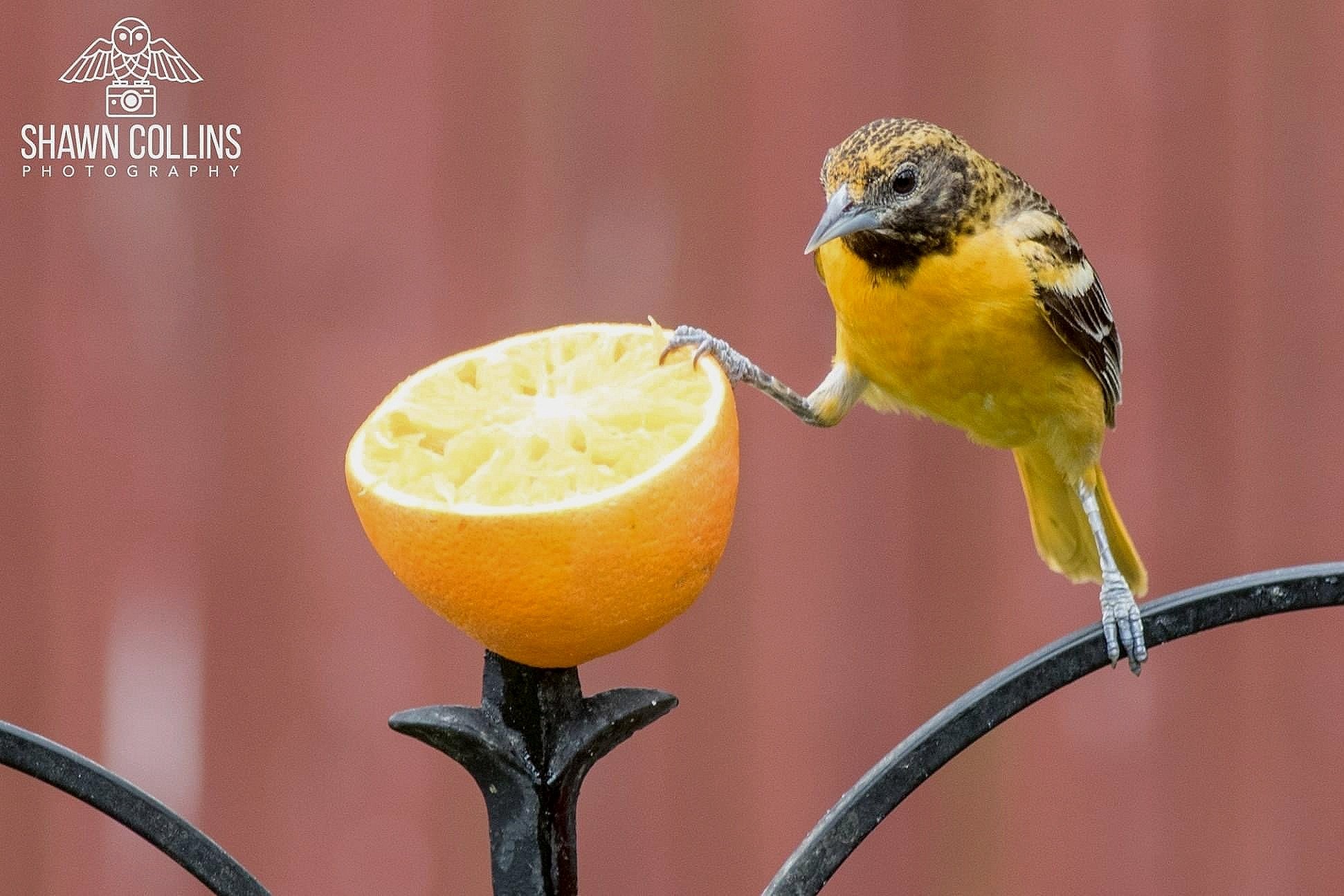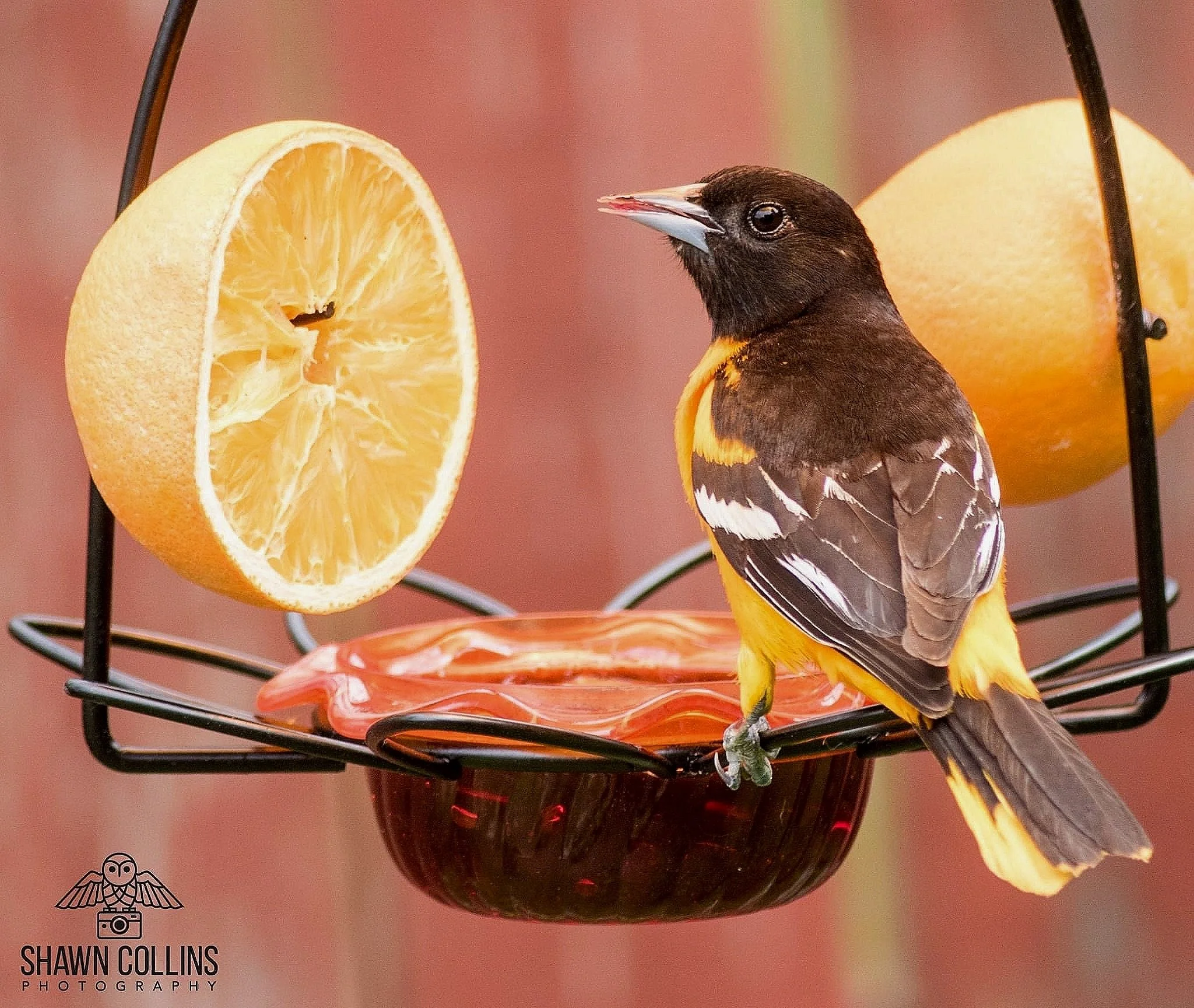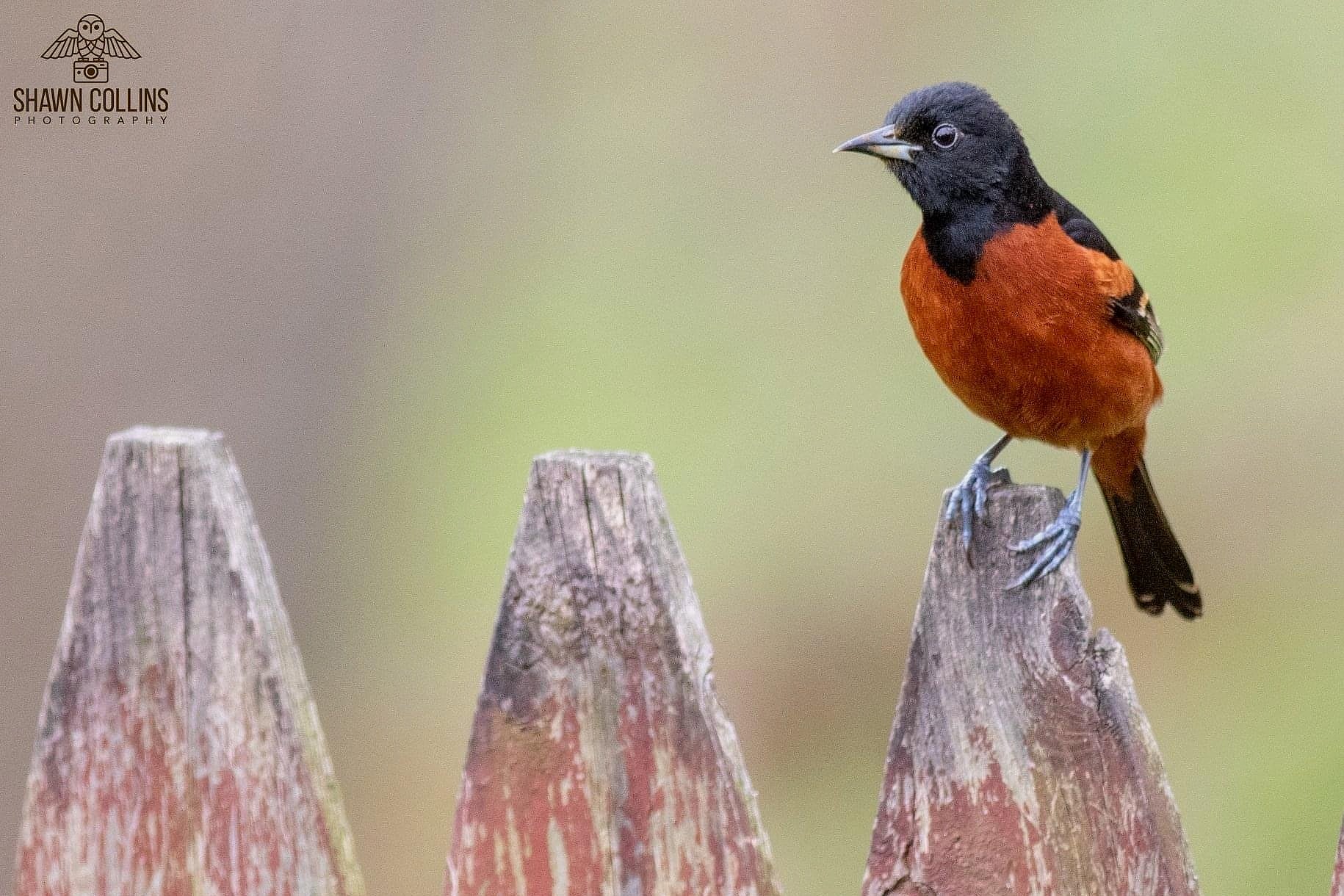BACKYARD BIRDS FAQ
w/ Katie Andersen
Attracting Orioles
Hand in hand with the return of hummingbirds is the anticipation of the brightly colored orioles. There are two oriole species that can be found in our area, the Baltimore Oriole and the Orchard Oriole. The Baltimore Oriole is more common and the most likely to visit your yard. The right food, water, and nesting material can make your yard more attractive to these visiting beauties.
Food
Orioles can be attracted with several types of food: nectar, jelly, orange halves, and mealworms. Oriole Feeders are designed to feed one or a combination of these food items. Nectar for orioles can be made the same as you would for hummingbirds. Mix 1 part sugar to 4 parts water. Stir until dissolved. DO NOT add food coloring. Be sure to keep the nectar fresh and change the nectar in the feeder every couple of days. You may see suggestions to make oriole nectar weaker, but if you offer both hummingbird and oriole feeders, the orioles often end up going after the stronger solution in the hummingbird feeder and ignore the weaker one in the oriole feeder. The 1 to 4 solution is safe for the orioles and will save you time. Grape jelly is very popular with orioles and now the most commonly offered food. Other flavors of jelly will be accepted by them, too, but grape is typically the easiest to get in large quantities.
Orioles will consume a lot of fruit when they first return to the area. Orange halves are usually offered, although they will accept other citrus fruits and small chunks of watermelons. It’s not unusual to see their fruit consumption drop off after the first couple weeks.
Mealworms are a high protein food that can keep orioles returning to your feeder when they have young on the nest. Orioles depend on insects as a major part of their diet; young orioles are fed nothing but insects and spiders during the first several weeks of their lives! Avoid pesticides if you want to attract orioles. These harmful chemicals remove the insects these birds need to survive and successfully breed.
Water
Orioles will visit water features in your yard to drink and bathe. If you are offering jelly, which can get messy, orioles will definitely enjoy a water source where they can clean up! Consider adding a water feature with movement to attract the orioles to your yard.
Nesting Material
Orioles like to place their nests in tall deciduous trees that border an open area (lawn, field, street, beach, etc). Nests are generally located at the end of branches. Orioles construct their nests out of long fibers, weaving with their beak impressive hanging baskets. Tall grasses and other fibrous plant stalks in your garden will provide orioles with natural nesting material. Do not offer string or lint. Strings can lead to nestlings becoming entangled, while lint can contain harmful chemicals.
Oriole Activity Cycle
Orioles are not quite as predictable as hummingbirds in their activities during their brief stay here, but do still exhibit a general pattern we can expect. Orioles return to our area around May 1st, frequently showing up on the same days people see their first hummingbirds. The first couple weeks of May are usually very active weeks with orioles visiting feeders in droves. Some of these birds continue north, into Canada, while others will set up breeding territories around here.
If our spring is cold and rainy, orioles are more likely to visit feeders longer, because the insects they depend on as a natural food source are less plentiful in those conditions. A warm spring generally results in fewer orioles at the feeder as they stick to the treetops, gleaning insects off the leaves and branches.
After May, oriole activity in your yard can vary. Some people still get them coming in while others will not see them again until the following spring. Orioles nest during June, and their diet is almost completely dependent on insects at this point. Offering mealworms at this time may help entice orioles back into your yard if you have some nesting close by. Once the young leave the nest, they may be brought to oriole feeders by their parents.
As more orioles learn to recognize oriole feeders as an easy source of food each year, we see more adult orioles engaging in this activity. Young orioles that are brought into feeders are more likely to recognize feeders in future years as a good place to eat. In recent years, jelly feeders seem to get a lot of feeding activity during the summer.
Orioles leave early. Baltimore Orioles from our region usually leave in August, heading east into the mountains before making the long journey south. There is a migration that runs very close along Lake Erie’s south shore and yards within this zone may see migrating orioles at their feeders when everyone else in the county have lost them for the season. Many of our orioles will winter in Central America to as far south as northern Colombia and Venezuela!



